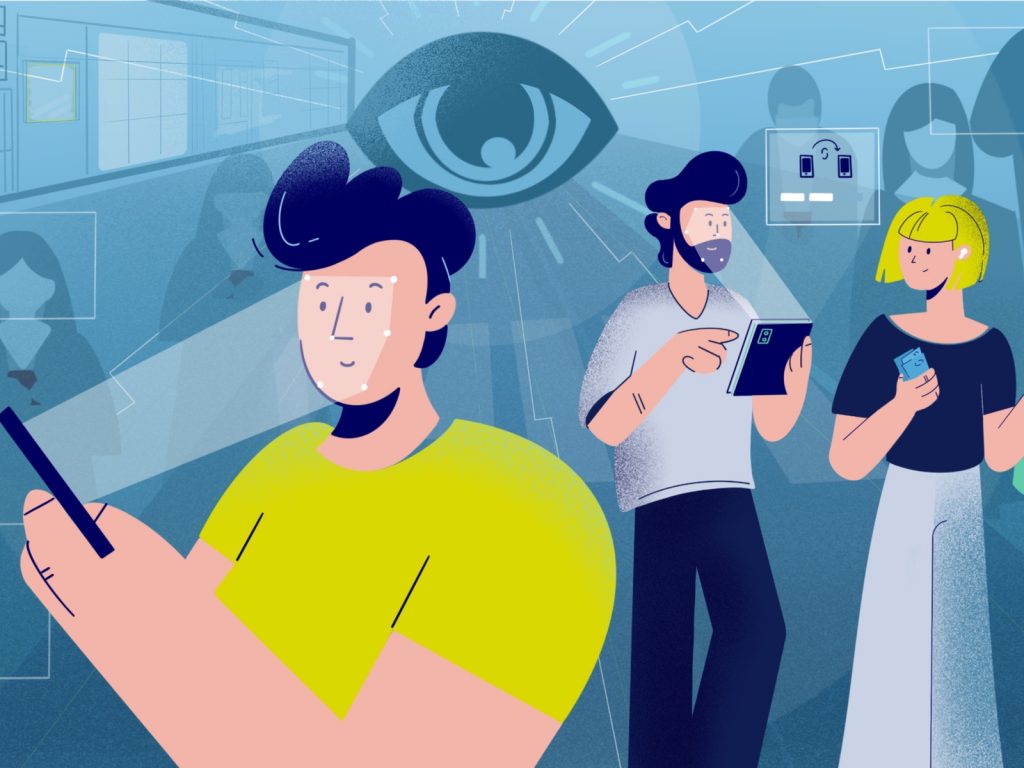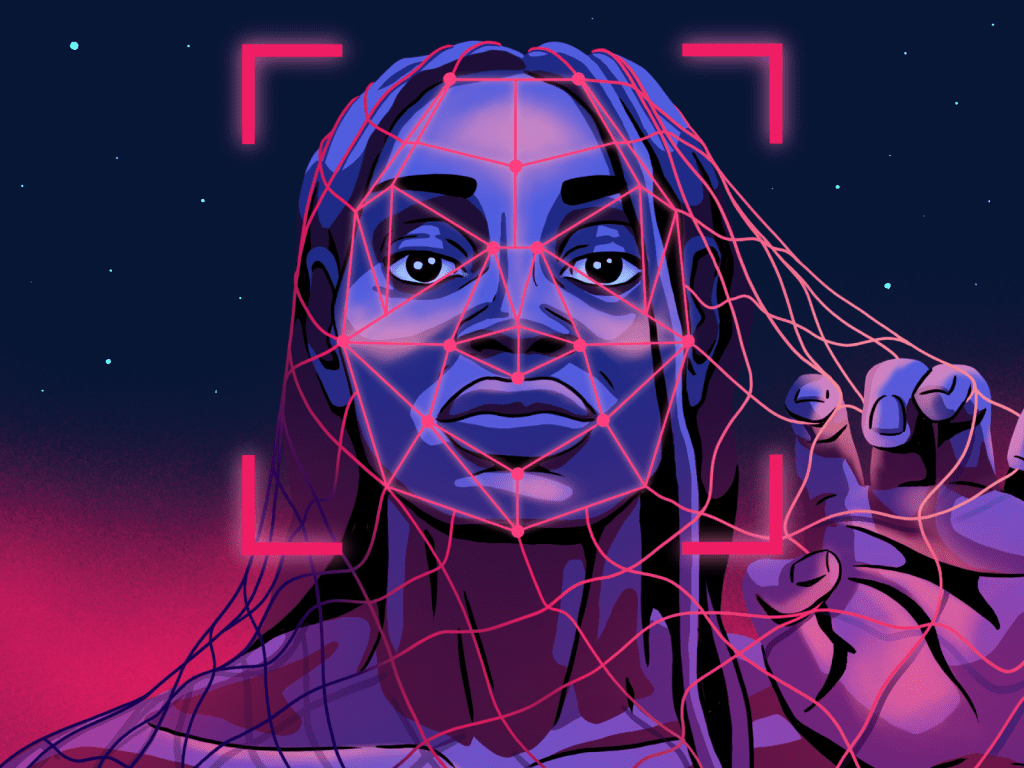
The aspect of the revolution of photography and subsequently enabling the informatization of the body has emerged when the digital photography in 1980 and also the invention of adobe photoshop in 1987. Computer vision is the field that has enabled computers to see the world and also has been studied in the research community for a long time. Various technologies have been developed and matured to be deployed in our daily lives. The aspects of artificial intelligence in the social and legal spheres have introduced certain technologies that have resulted in certain social and legal implications and also led to the development of both; the social and legal spheres. One of the technologies that have been introduced is face recognition technology.
The face has been referred to as one of the most important human biometrics which has been used frequently in everyday human communication and due to some of its unique characteristics thereby playing a major role in conveying identity and emotion and so various numerous methods have been proposed for face recognition.
The recognition of face has become an extensive and active area of research. This may be because of the increased interest in biometric security systems in general but also because of the recent advances that have taken the state of art far beyond the initial attempts of using direct image comparison. The frame artificial intelligence-enabled face recognition technology has the potential for enabling greater efficiency in the provision of vital services that are dependent on the accurate identification of individuals both in the public and private spheres. The face recognition technology may prove to be a key technology in increasing efficiency in contexts where establishing identity has been inherently difficult and crucial for ensuring individuals’ safety online and offline. Apart from various significant aspects, this technology can sometimes come at the cost of fundamental societal values namely privacy, confidentiality, non-discrimination, and due process.
Understanding the concept of Facial Recognition
Face recognition technology is an artificial intelligence-driven technology. The systems and the techniques of face recognition and detection are a subset of an area related to information technology and information security is concerned with the assurance of confidentiality, integrity, and availability of information in all forms. There have been tools and techniques for supporting the management of information security, one of the more important tools being facial recognition technology. This evolution of facial recognition technology is quite prevalent in both the private and public sectors. It is referred to as a biometric image capture tool that is used for either person identification and verification to connect them definitely to their indexed data.
The technology works on the basis that a former matches a face against an image database of known bases and hence verifies their identities and compares the image of the face against that of an identity that has been claimed. It is an algorithm used for recognizing human faces through the use of facial features which helps track facial features from a photo or a video.
The application has been beneficial in terms of increased efficiency and is dependent on the processing power and the application of the system. The system of Face recognition technology relies on a voluntary enrolment process or other initial capture systems for building the image database. The technology has been used for identification and identity authentication processes by law enforcement agencies, border control, access control, and secure logging-in processes. The large-scale application namely the Indian Unique information number project inhibits and involves recording every citizen’s personal and biometric details for strengthening social and economic inclusion, and also helps in building a national database that would be beneficial for empowering access to healthcare and banking. The technology that has been allied to face recognition. Face detection is how faces are detected in an image that is not necessarily a portrait of an identity photograph.
Current Usage of Face Recognition Technology
Notwithstanding the current limitation, the technology of facial recognition has already been implemented in many sectors such as security, commerce, social media, personal uses, and sometimes even religious purposes. For example, in many years it has been observed that the technology has been used by police departments in the form of facial recognition software for pursuing prostitutes, drug dealers, and other non-violent persons.
- Passports and other government use: Nowadays, electronic passports with a digitized image of the passport holder’s photograph have been introduced and are used to pass through automatic gates that use facial recognition technology. Some of its applications have also been proposed by various government agencies. The International Civil Aviation Authority, a United Nations agency, has advocated for the use of automatic gates to be used globally. Germany has introduced the concept of electronic identity cards, which store personal information such as digital photographs, fingerprints, and an electronic signature and can also be used to travel within the European Union. On the other hand, the Indian government initiated the Unique Identification project and the Unique Identification Authority to assign a Unique Identification number to every citizen. Then, the newly introduced ‘Aadhar Card’ uses this technology in the enrollment stage, wherein capturing resident’s identity information is matched against every other previously enrolled resident for avoiding duplication.
- Law enforcement processes: Law enforcement agencies are the operational divisions of governmental policy, regulations, and legislation. This technology and the type of biometrics are used by these agencies for crime prevention and detection, border control, and immigration. For instance, the nation-state of the United Nations has introduced the Federal Bureau of Investigation in 1999 that has included within its system biometric identifiers such as footprints, palmprints, fingerprints, and photographic imagery that have been used for investigation purposes and for implementing national security.
- Gambling industry: The technology has been used in the gambling industry for reducing financial risks, assisting social responsibility, and enhancing customer service by passing through registration desks. The images of the people are scanned by the face recognition software for identifying gamblers who have either voluntarily enrolled on an exclusion list or for identifying gamblers who are cheats. The use of face recognition technology in the gambling sector might be morally justified for protecting the interests of the sectors and also prevents excessive gambling by those who have excluded themselves. Although the excessive use of the software can sometimes increase the risks.
- Banking industry: The banking industry uses face recognition technology in the form of automated teller’s machines to prevent fraud and identity theft. These machines are connected to the customer’s mobile phones or their computer and then their image is thus matched to the database of pre-enrolled images. This software also has in itself an anti-spoofing algorithm for preventing the fraudulent use of the machines.
Legal Implications

Apart from providing and proving beneficial to the societal norms and values by using face recognition technology in daily lives, not all aspects of this technology have been beneficial because sometimes it has potentially diminished autonomy i.e., liberty, privacy, choice, and some of the fundamental rights have been threatened and violated.
Face Recognition and Privacy
The right to privacy has been recognized as a human right under Article 17 of the International Covenant on Civil and Political Rights. It has been considered as a right under the Human rights law. Technology can sometimes lead to the dangers of the handling of personal information and parallelly the scenarios of unconsented and consented photography that invade privacy and breach the legal principle of confidentiality, as the technology involves the collecting and the storing of images and the capturing of images of the various citizens, which on the other hands increases the risks for the same. The issues related to privacy can arise in the form –
- Active consent in the subject of data: The capturing of biometric traits by using cameras can have advantages and disadvantages. On the one hand, cameras provide the advantage of being commonplace, and cheap for allowing to identify persons at a proximity distance, and on the other hand biometric samples can be collected overtly and covertly without the active consent of the data subject. Facial images in the form of biometric samples are risky because they can be collected at a distance or repurposed from the use of the data subject being actively consented to. Secondly, there are risks in data testing and one such instance can be cited by the National Institute of Standards and Technology, a government agency that uses this technology. The National Institute of Standards and Technology for the construction of vast data sets included the images of vulnerable populations without their active consent, including abused children, visa applicants, and other individuals, charged with the suspicion of criminal activity. The public sectors and agencies store databases including images of data subjects without their consent.
- Face recognition technology and surveillance: The surveillance of people and the population is not new, and it has also been enhanced by various technologies for increasing its efficiency. And sometimes, face recognition technology-enhanced surveillance can interfere with privacy. It can interfere with privacy when surveillance includes those data gathering activities by the state and various organizations for observing or seeking to predict behavior.
- Protection of face images: The universality of face recognition technology and its unknown unconsented use by the large social media networks and others have cultivated the generality that facial images do not need the same protection, when compared to that of big data, thereby affecting the Personal choice. Thus, it is not the case that only big data is not compromised but the images also lead to the violation of privacy.
The Drawbacks
The ethical and legal issues and risks arise in the face recognition technology when the biometric face recognition has been compromised when an impostor circumvents the system by spoofing the identity of a registered user. The ethical and legal risks are predicted by the poor safeguards and security of the system and potential fraudulent activity that the system allows. The most common form of abuse of face recognition technology is face spoofing. Additionally, the introduction of three-dimensional printers and the determination of impostors have also increased the vulnerability of the technology. The misuse of this technology in various circumstances can be interpreted. For instance a false positive in case of a criminal investigation can lead to wrongful police and judicial action against an innocent individual and a false negative can lead to a criminal being undetected and therefore continuing to commit crimes.
Conclusion
It can then be summarised that facial recognition technology has been developing quickly in the past years and has been used by multiple actors thereby posing an impact on privacy and security. When society progresses with the new artificial intelligence-driven technologies such as facial recognition, there come a lot of drawbacks for the same and hence it makes it necessary for the involvement of certain stakeholders and experts from different disciplines. It can also be further stated that as the industries and various sectors of the society continue to use and look for new directions for face recognition technology solutions, there is a lack in the legal provisions being implemented as these are not kept in pace with the accelerated technological developments.
For instance, various e-commerce industries and companies are not given proper instructions on using it, and also no legal provisions are mandated, also with the drawbacks related to privacy and security. The author can thus recommend by stating that it must be the responsibility of the government to set up and raise concerns and initiatives for the same. With all the benefitted advantages, technology has been posing serious challenges for the right to privacy and data concerns.